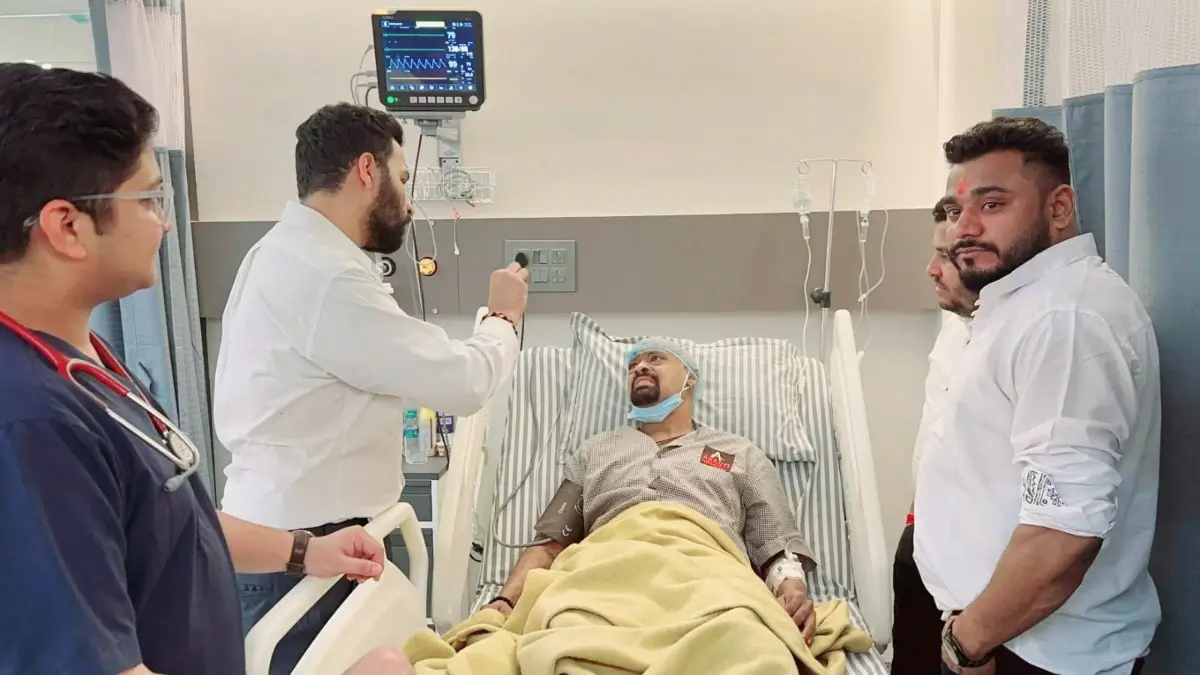The latest health update about former Indian cricketer Vinod Kambli has highlighted his medical condition, with reports indicating the existence of blood clots in his brain. This disclosure has sparked apprehensions among supporters and the cricketing fraternity. Comprehending the characteristics of this ailment, together with its etiology, manifestations, and therapies, is essential for recognizing the gravity of Kambli’s predicament and the wider ramifications of cerebrovascular health.
Comprehending Cerebral Thrombosis
Cerebral thrombosis or cerebral venous thrombosis (CVT) refers to blood clots in the brain, classified by kind and location. These clots form when blood coagulates, creating a mass that impedes normal blood flow within the cerebral veins. This condition can result in serious repercussions, since it impedes the supply of oxygen and nutrients to cerebral tissues, potentially leading to a stroke, edema, or even irreversible neurological impairment.
Etiology of Cerebral Thrombosis
Multiple factors contribute to the development of cerebral blood clots. The primary factors encompass:
Trauma or Head Injury: Physical trauma to the cranium can impair blood arteries, resulting in clot formation.
Atherosclerosis: This disorder entails the accumulation of lipid deposits in blood arteries, potentially resulting in thrombosis.
Blood Disorders: Conditions such as thrombophilia (elevated propensity for blood clotting) or polycythemia vera (excessive red blood cell formation) heighten the risk of thrombosis.
Lifestyle Factors: Sedentary behavior, obesity, tobacco use, and elevated cholesterol levels are recognized contributors to clot formation.
Medical Conditions: Diabetes, hypertension, and cardiovascular illnesses frequently increase the risk of thrombosis. Dehydration may contribute to blood viscosity, hence enhancing clotting potential.
Severe infections, such as COVID-19, have been linked to heightened clotting in certain patients.
Indicators to Monitor
The manifestations of cerebral blood clots may differ according on the size, location, and severity of the obstruction. Prevalent symptoms encompass:
Intense Headache: Frequently characterized as among the most excruciating headaches seen, it may occur abruptly and endure persistently.
Nausea and vomiting: Consequences of elevated intracranial pressure.
Blurred Vision or Vision Loss: Resulting from impaired blood circulation to the optic nerves.
Seizures: Cerebral clots can induce atypical electrical activity in the brain.
Neurological Deficits: Manifestations may include unilateral weakness or numbness, dysarthria, impaired ambulation, or cognitive disorientation.
Dizziness and loss of balance: Indicative of circulatory issues in the cerebellum.
Assessment
Diagnosing cerebral blood clots necessitates sophisticated medical imaging and examinations. These comprise:
CT (Computed Tomography) Scan: Provides intricate images of the brain to detect clots or hemorrhaging.
MRI (Magnetic Resonance Imaging): Delivers accurate images of the brain’s vascular structures to identify anomalies.
Angiography: Employs contrast dye to see vascular structures and identify obstructions.
Blood Tests: Evaluate coagulation factors, lipid profiles, and further relevant conditions.
Therapeutic Alternatives
The management of cerebral thrombosis is contingent upon the etiological factors and the severity of the disorder. Prevalent therapeutic interventions comprise:
Pharmaceuticals:
Anticoagulants: Inhibit further thrombus development.
Thrombolytics: Facilitate the dissolution of clots in acute situations.
Anti-inflammatory medications: Alleviate edema and related symptoms.
Surgical Procedures:
In critical instances, surgical intervention may be required to excise the clot or alleviate intracranial pressure.
Modifications to Lifestyle:
Patients are frequently encouraged to embrace a healthy lifestyle, encompassing regular physical activity, a nutritious diet, and the cessation of smoking and alcohol consumption.
Continuous Surveillance:
Consistent follow-ups and imaging are essential to avert recurrence.
Prognosis and Rehabilitation
The prognosis for persons with cerebral blood clots is contingent upon the severity of the injury and the timeliness of intervention. Timely intervention markedly enhances results, and numerous patients can achieve complete recovery with appropriate care. Delays in treatment may result in complications such as strokes, irreversible neurological damage, or mortality.

Strategies for Prevention
Preventing cerebral blood clots necessitates a proactive strategy for comprehensive health maintenance:
A nutritious diet that prioritizes fruits, vegetables, whole grains, and low-fat foods supports optimal vascular health.
Consistent Exercise: Enhances circulation and diminishes the likelihood of thrombus development.
Maintain Hydration: Sufficient water consumption averts blood viscosity.
Refrain from Smoking and Alcohol: Both induce vascular impairment.
Medical Checkups: Routine health screenings facilitate the early identification of risk factors such as hypertension or hypercholesterolemia.
The Case of Vinod Kambli and Its Consequences
Vinod Kambli’s health update underscores the significance of cerebrovascular health, particularly for individuals with risk factors such as a stressful lifestyle, prior medical issues, or age-related susceptibilities. The cricketing fraternity and fans are optimistic about his swift recovery. This also serves as an opportunity to highlight the risks associated with neglecting early signs of blood clots and the need of maintaining a healthy lifestyle.
Kambli’s treatment and recuperation underscore the necessity for attention over health risks, especially among those who have maintained busy lifestyles. Advancements in medical research have markedly enhanced the prognosis for patients with cerebral blood clots, contingent upon the provision of timely and adequate care.
If you are interested for more: Vinod Kambli Health Update: Medical examinations indicate the presence of ‘blood clots in his brain’; learn more about the disease AIBE 19 Question Paper 2024, Examination Format, Anticipated Cut-Off, Download Set C PDF!


